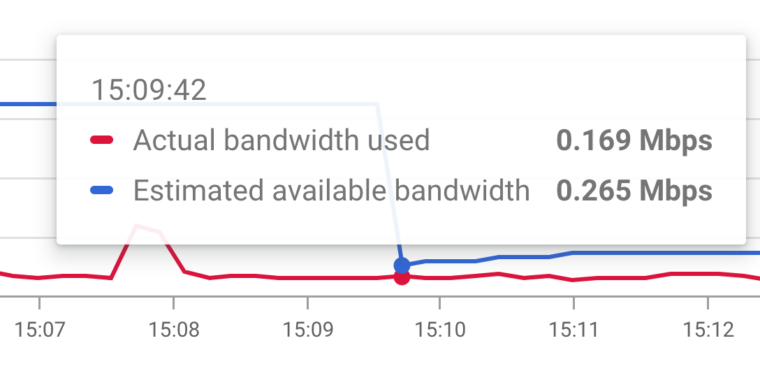
The Federal Communications Commission will consider issuing new rules for wireless receivers that could prevent future conflicts like the ongoing battle between the aviation and cellular industries.
There are strict rules requiring wireless devices to transmit only in their licensed frequencies. That means, for example, that AT&T and Verizon’s 5G transmissions in C-band spectrum (3.7 to 3.98 GHz) have to stay within the C-band.
But there isn’t much to prevent devices from receiving transmissions from outside their allotted frequencies. The altimeters used in airplanes to measure altitude officially rely on spectrum from 4.2 GHz to 4.4 GHz, but the Federal Aviation Administration has said that 5G transmissions in the C-band could interfere with the operation of some of those altimeters.
If an altimeter is affected by 5G, that means it is receiving transmissions from the wrong spectrum band despite a buffer zone of at least 220 MHz. The 220 MHz guard band is actually 400 MHz in practice this year because AT&T and Verizon have not yet deployed above 3.8 GHz, but the FAA still says the current level of transmissions can interfere with some altimeters. There are also satellite transmissions between 4.0 and 4.2 GHz, but those haven’t been a concern for the FAA.
Chair: Bad receivers “diminish broader opportunities”
In a speech Tuesday at Mobile World Congress, FCC Chairwoman Jessica Rosenworcel said the commission needs to get tough on wireless receivers. Rosenworcel did not mention airplane altimeters but explained that faulty receivers that cannot avoid transmissions from other spectrum bands can prevent new services in unused frequencies.
She continued:
In the past, our discussions of spectrum efficiency have been a one-way effort. They have focused almost exclusively on transmitters. We’ve put a lot rules in place about how and when transmitters can operate in order to control interference levels. But here’s the thing: Wireless communications only exists when transmitters are connected to receivers. Both are vital. Both matter. And going forward policymakers need to consider both transmitting and receiving. Not just the former at the expense of the latter.
That’s because minimally performing receivers can make it more difficult to introduce new services in the same or nearby frequencies. They can diminish broader opportunities with radio-frequency and put constraints on what is possible in the new wireless world.
FCC to ask for input on possible regulations
Rosenworcel said she will propose launching “a new inquiry to explore receiver performance and standards.” The notice of inquiry would ask for public input on possible solutions, including new “regulatory requirements,” Rosenworcel said.
She went on:
This inquiry would ask how receiver improvements could provide greater opportunities for access to spectrum. It would explore how these specifications could come in the form of incentives, guidelines, or regulatory requirements—in specific frequency bands or across all bands. And it would seek comment on legal authority and market-based mechanisms that could help create a more transparent and predictable radio-frequency environment for all spectrum users—new and old.
Rosenworcel said she will make the proposal in April. While the FCC still has a 2-2 partisan deadlock, the Democratic chair has bipartisan support. Rosenworcel thanked Republican Commissioner Nathan Simington “for his leadership on these issues and his willingness to work with me on a path forward.”
Simington issued a statement applauding “Chairwoman Rosenworcel’s decision to consider exploring a new regulatory framework for commercial spectrum allocations.” Simington’s statement went on to cite the problem with altimeters:
An approach that looks at both the receiver and transmitter ends of the equation is the only framework truly capable of timely accommodating the interests of federal users of spectrum, and other incumbents. We see a lot of value in getting to a place where conflicts such as the C-band/altimeter fight are headed off at the pass.
This model will provide all interested parties sufficient advanced warning about problematic band edges adjacent to any new commercial spectrum. Clear rights regarding interference protection can provide incentives for innovation and collaboration among spectrum users in a way that avoids regulatory dictate.
FCC urged aviation industry to act two years ago
When the FCC voted to allow cellular transmissions in the C-band in February 2020, the commission adopted power limits and the 220 MHz guard band between 5G and altimeters. “The technical rules on power and emission limits we set for the 3.7 GHz service and the spectral separation of 220 megahertz should offer all due protection to services in the 4.2-4.4 GHz band,” the FCC said.
While the FCC found no evidence that “harmful interference would likely result under reasonable scenarios,” it urged the aviation industry to conduct more testing on altimeters. “[F]urther analysis is warranted on why there may even be a potential for some interference given that well-designed equipment should not ordinarily receive any significant interference (let alone harmful interference) given these circumstances,” the FCC said. Despite that warning, the FAA and aviation industry seemingly weren’t prepared for the 5G transmissions when the rollout occurred almost two years later.








